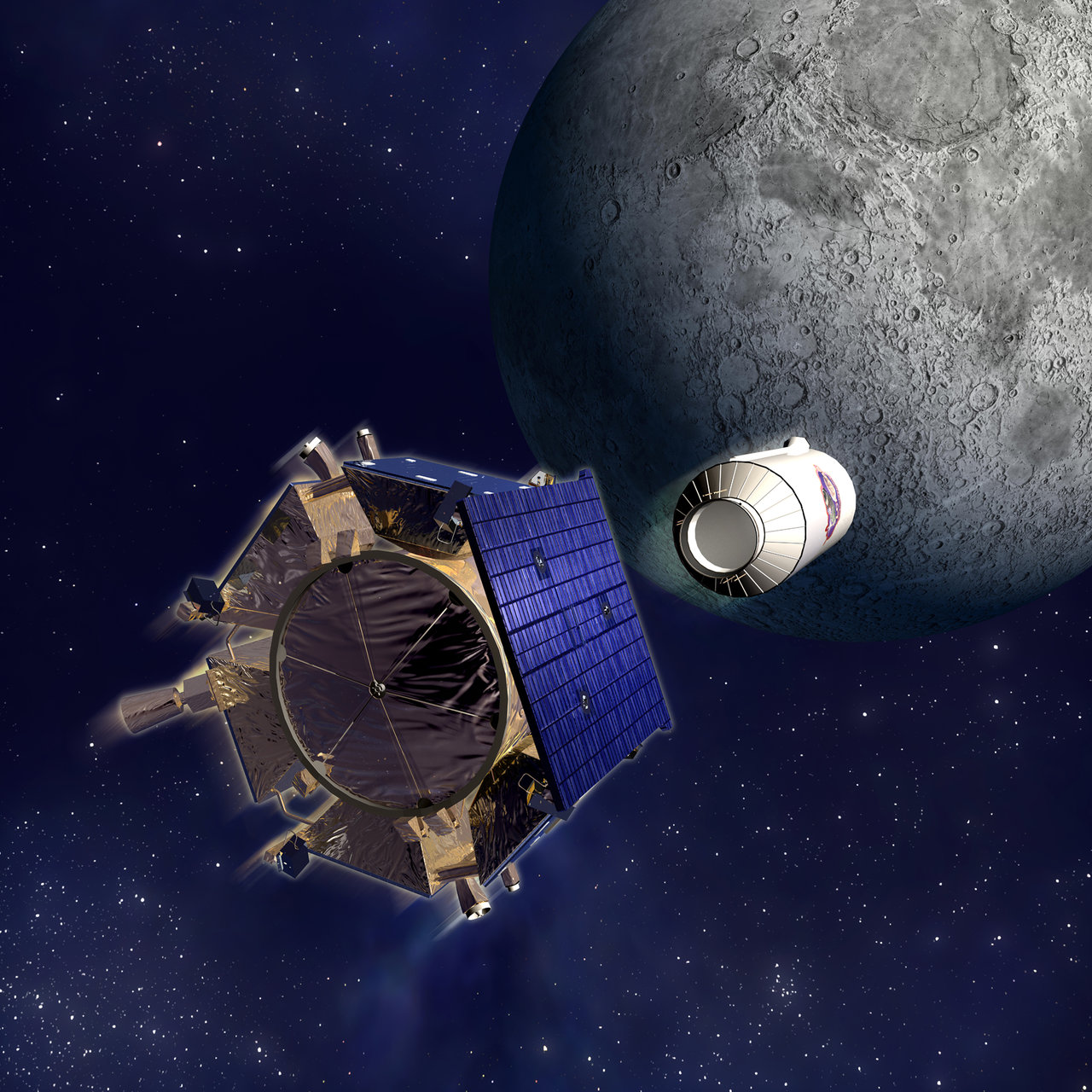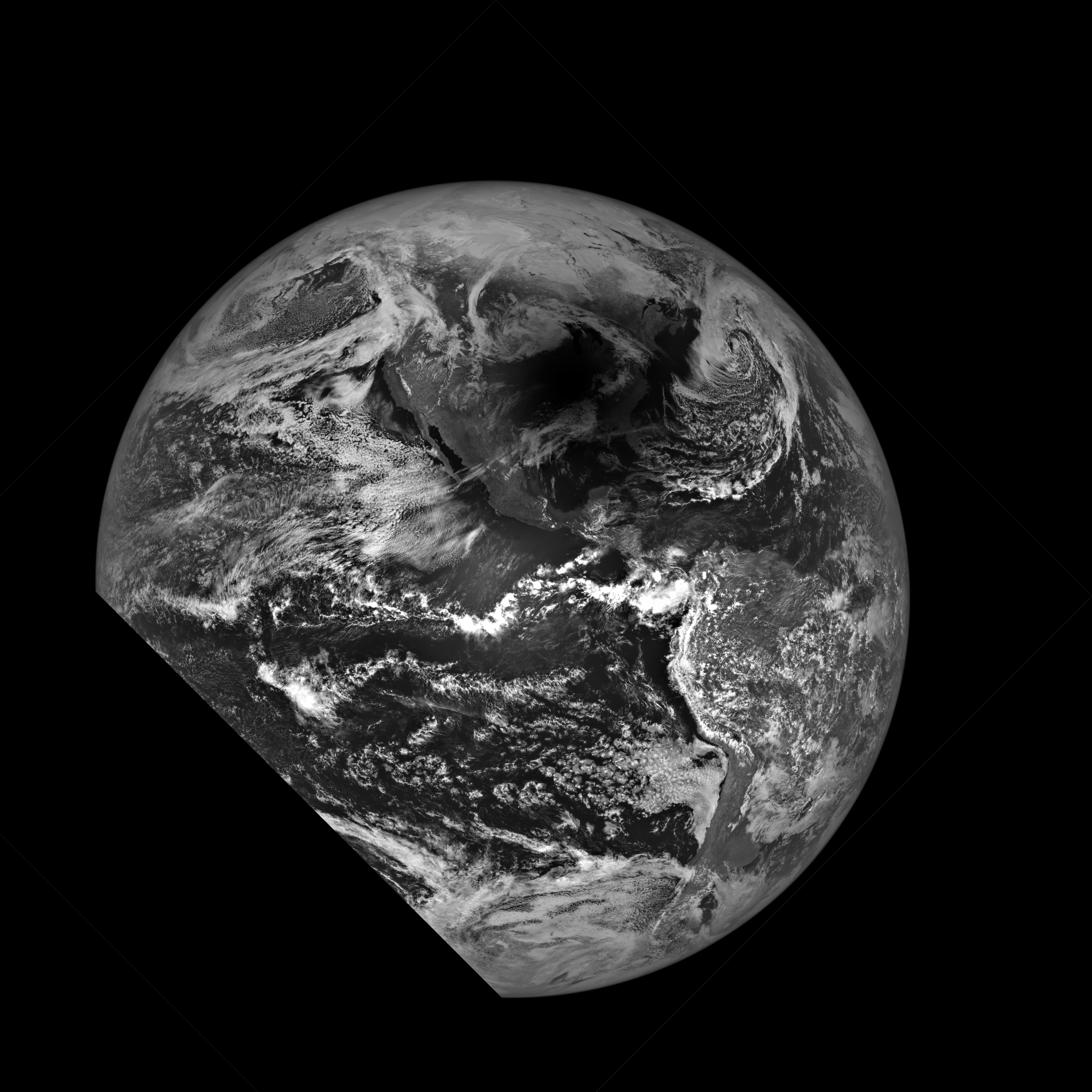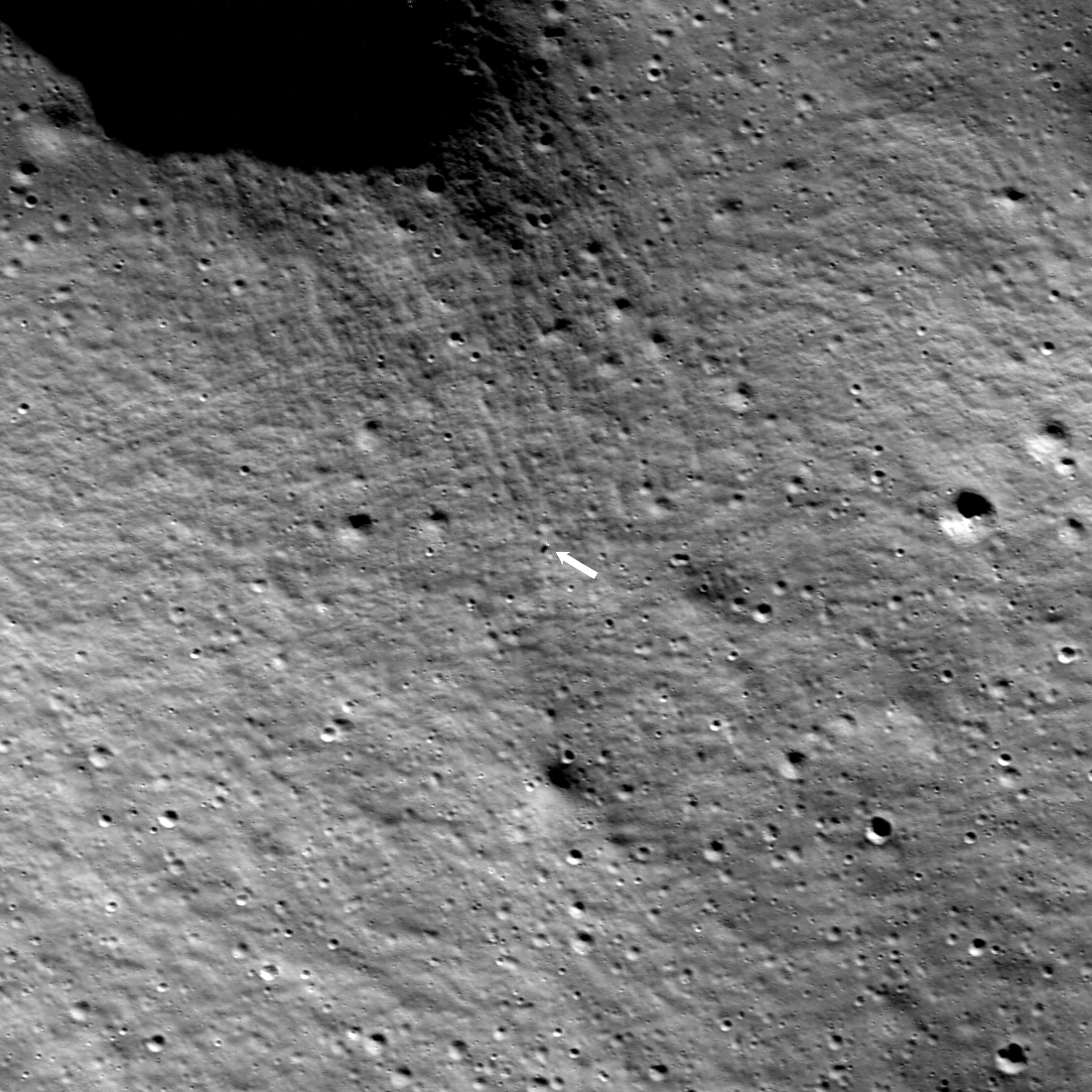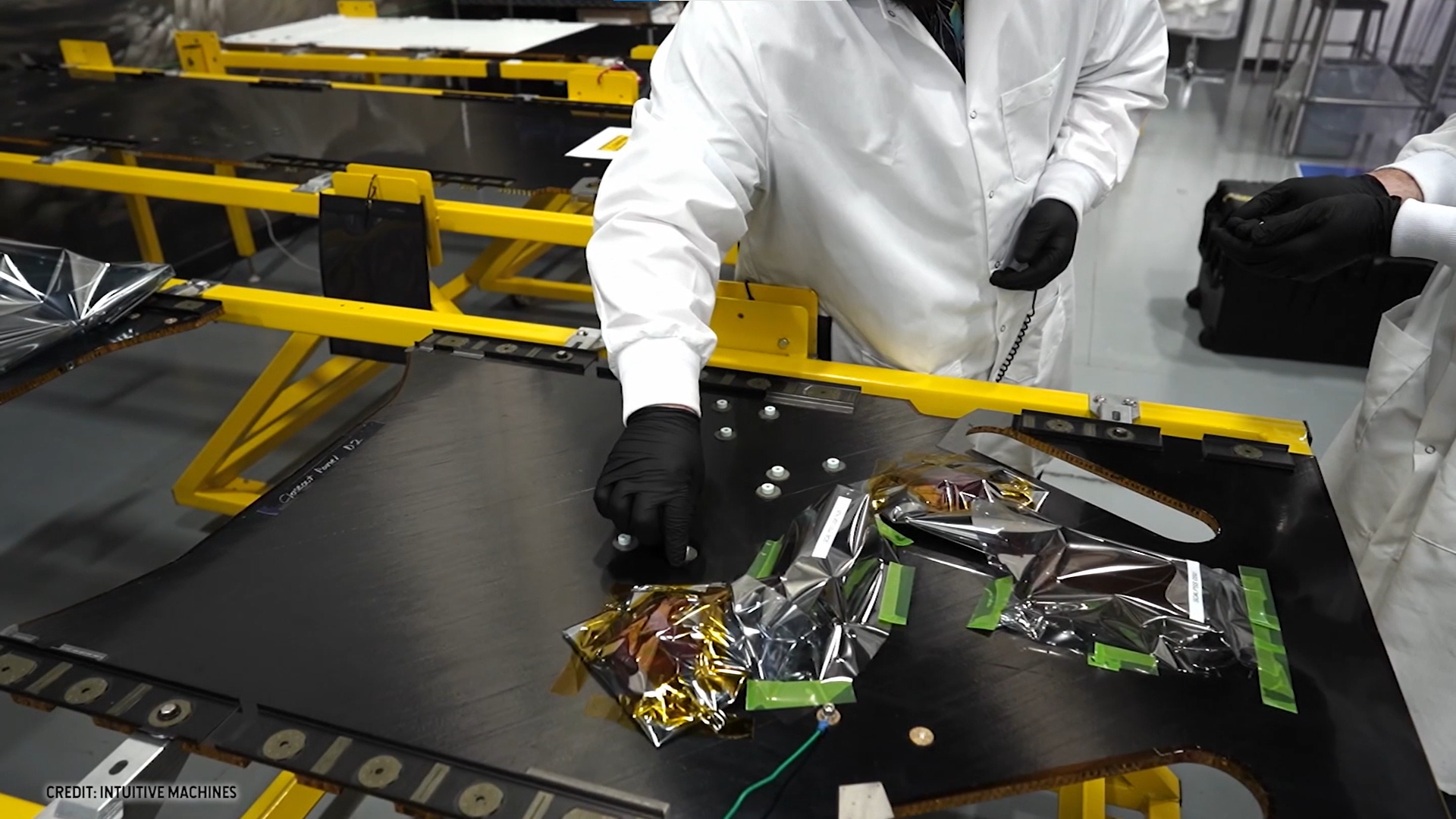LCROSS
Lunar Crater Observation and Sensing Satellite
Type
Launch
Target
Objective
Traces of hydrogen detected at the Moon's north and south poles hinted at water ice, hiding in the shadows there. NASA sent the LCROSS mission on a collision course to find out.
What was LCROSS?
NASA's Lunar Crater Observation and Sensing Satellite (LCROSS) was launched with the Lunar Reconnaissance Orbiter to determine if water-ice exists in a permanently shadowed crater at the Moon's south pole. As planned, LCROSS and its Centaur stage impacted the Moon on Oct. 9, 2009.
- The twin impacts exposed a plume of material that might not have seen direct sunlight for billions of years.
- LCROSS and LRO found evidence that the lunar soil in shadowy craters is rich in useful materials, and that the Moon is chemically active and has a water cycle.
- Scientists also confirmed the water was in the form of mostly pure ice crystals in some places.
Nation | United States of America (USA) |
Objective(s) | Lunar Orbit and Impact |
Spacecraft | S-S/C |
Spacecraft Mass | 1,369 pounds (621 kilograms) |
Mission Design and Management | NASA / ARC |
Launch Vehicle | Atlas V 401 (no. AV-020) |
Launch Date and Time | June 18, 2009 / 21:32:00 UT |
Launch Site | Cape Canaveral Air Force Station, Florida / SLC-41 |
Scientific Instruments |
|
Key Dates
June 18, 2009: Launch
Oct. 9, 2009: Lunar Impact
In Depth: LCROSS
The mission of the Lunar Crater Observation and Sensing Satellite (LCROSS), like the Lunar Reconnaissance Orbiter (LRO), was to confirm the presence of water ice in a permanently shadowed crater at the Moon’s south pole. Other goals for LCROSS included test new modular subsystems for potential use on future missions.
Both spacecraft were part of NASA’s now-canceled Lunar Precursor Robotic Program and both missions were originally funded as part of NASA’s human spaceflight Constellation program to return humans to the Moon.
The mission included impacting the Centaur upper stage on the surface of the Moon and then flying LCROSS through the debris plume about four minutes later to collect data on the soil. LCROSS also would impact a little later.

LCROSS was launched with LRO and traveled to the Moon as a co-manifested payload aboard the launch vehicle. The Centaur upper stage entered a 112 × 129-mile (180 × 208-kilometer) parking orbit before firing again at 22:15 UT June 18 to reach a 121 × 219,800-mile (194 × 353,700-kilometer) orbit at a 28.2-degree inclination.
At that point, LRO separated from the Centaur-LCROSS combination, and the Centaur then vented some remaining propellant, which slightly altered its orbit to 83 × 216,600-mile (133 × 348,640-kilometer) orbit at a 28.0-degree inclination, ensuring a lunar flyby.
The combined Centaur-LCROSS passed the Moon at a distance of 2,030 miles (3,270 kilometers) at 10:29 UT June 23 and entered into an Earth polar orbit at approximately 222,000 × 362,000 miles (357,000 × 582,000 kilometers) at a 45-degree inclination with an orbital period of 37 days. The combined stack reached apogees near the Moon on July 10, Aug. 16, and Sept. 22 until its trajectory intersected with that of the Moon on Oct. 9.
A serious problem was discovered earlier, on Aug. 22, when mission controllers found that a sensor problem had caused the spacecraft to burn through 309 pounds (140 kilograms) of propellant, more than half of the amount remaining at the time. The loss meant that the original mission could still be accomplished, but with very little margin.
At 01:50 UT Oct. 9, the Centaur and LCROSS separated. The Centaur then crashed onto the surface of the Moon at 11:31 UT in the Cabeus crater at the lunar south pole. The impact excavated roughly 350 (metric) tons of lunar material and created a crater estimated to be about 66 feet (20 meters) in diameter.
Four minutes later, LCROSS flew through the resulting debris plume that rose above the lunar surface, collecting data before it struck the Moon at 11:36 UT at a velocity of 5,600 mph (9,000 kph).
The LRO’s diviner lunar radiometer experiment (DLRE) obtained infrared observations of the LCROSS impact point as it flew by about 90 seconds after the impact at a range of about 50 miles (80 kilometers).
On Nov. 13, 2009, NASA formally announced that data from LCROSS “indicates that the mission successfully uncovered water … near the Moon’s south pole.”
Nearly a year later, on Oct. 21, 2010, mission scientists announced new data, including evidence that the lunar soil within Cabeus was rich in useful materials (mercury, magnesium, calcium, silver, sodium) and that the Moon is chemically active and has a water cycle. They also confirmed that in some places the water on the south pole is in the form of pure ice crystals.
Additional Resources
Key Reference
Siddiqi, Asif A. Beyond Earth: A Chronicle of Deep Space Exploration, 1958-2016. NASA History Program Office, 2018.









